Basic Knot-Tying Techniques That Could Save Your Life
Knot-tying isn't just for sailors or boy scouts anymore! It’s a survival skill that can come in handy in more situations than you’d think. From building a shelter to securing gear, or even rescuing someone, knowing how to tie the right knot can make all the difference. The good news? You don’t need to learn hundreds of different ones. Just knowing a handful of basic, reliable knots can be a lifesaver (literally) on your next camping trip.
1. Square Knot (Reef Knot): For Quick, Secure Ties
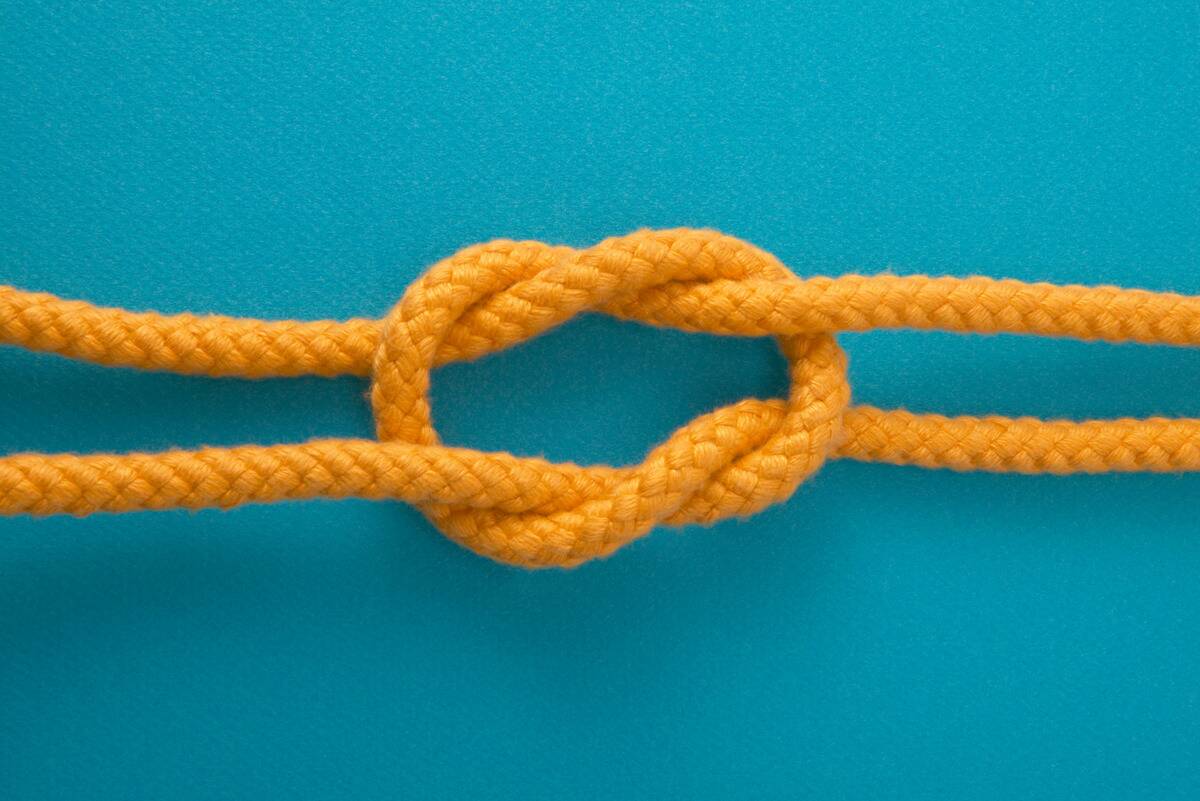
The square knot is perfect for tying two ropes of the same size together. It's simple, fast, and holds well under tension, as long as the load you're securing isn’t moving around too much. Think of it as your go-to knot for bundling firewood, tying bandages, or securing gear in a pinch.
How to tie it:
Right over left, then left over right. Pull tight.
Just remember: it’s not ideal for life-or-death weight-bearing situations, but for general use, it’s a knot everyone should know.
2. Bowline: The "Rescue Me" Knot
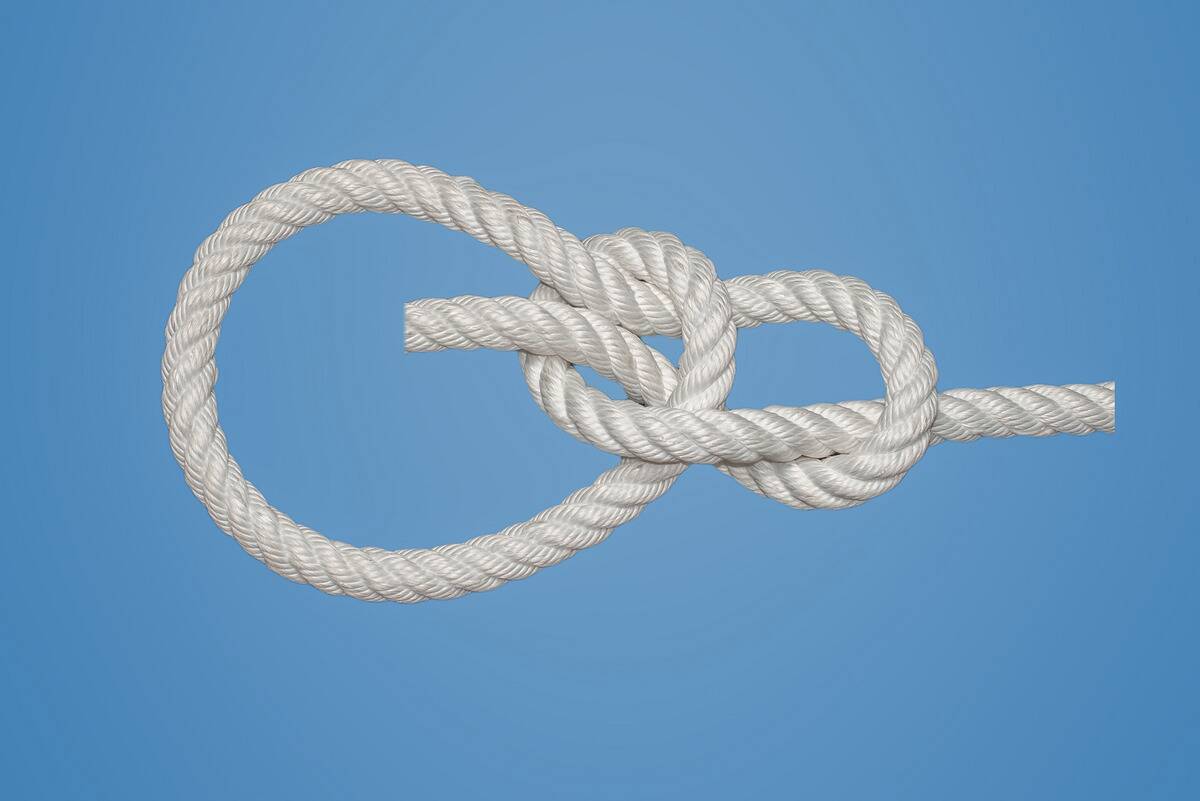
The bowline is often called the "king of knots" because it creates a loop that won't slip under tension but is still easy to untie—even after it’s been loaded. It’s incredibly useful for rescue situations, like pulling yourself or someone else out of a ditch or over a ledge.
How to tie it:
Make a small loop. The working end comes “up through the rabbit hole, around the tree, and back down the hole.” That little rhyme might stick with you longer than the knot itself!
3. Clove Hitch: Fast and Adjustable
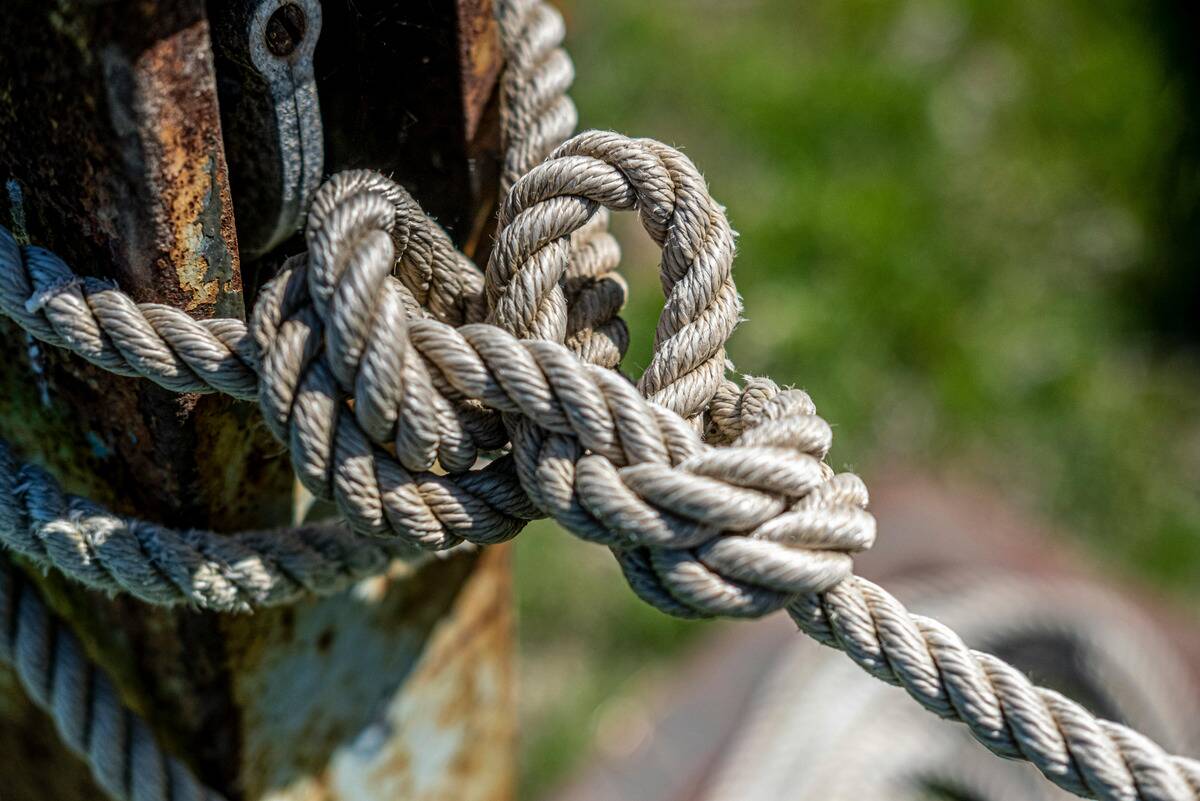
The clove hitch is one of the quickest knots you can tie around a pole, tree, or post. It's adjustable and easy to untie, making it great for hanging tarps, creating a clothesline, or lashing things together for a little while. It works best under tension but may slip if not secured under load. Use a half hitch or stopper knot for added security if needed.
How to tie it:
To tie a clove hitch knot, wrap the rope around a post or pole once. Cross the rope over itself and wrap it around the post again, making a second loop. Tuck the working end under the second loop you just made. Pull tight. The two loops should lie side by side, crossing in an "X" shape.
4. Taut-Line Hitch: Your Adjustable Friend
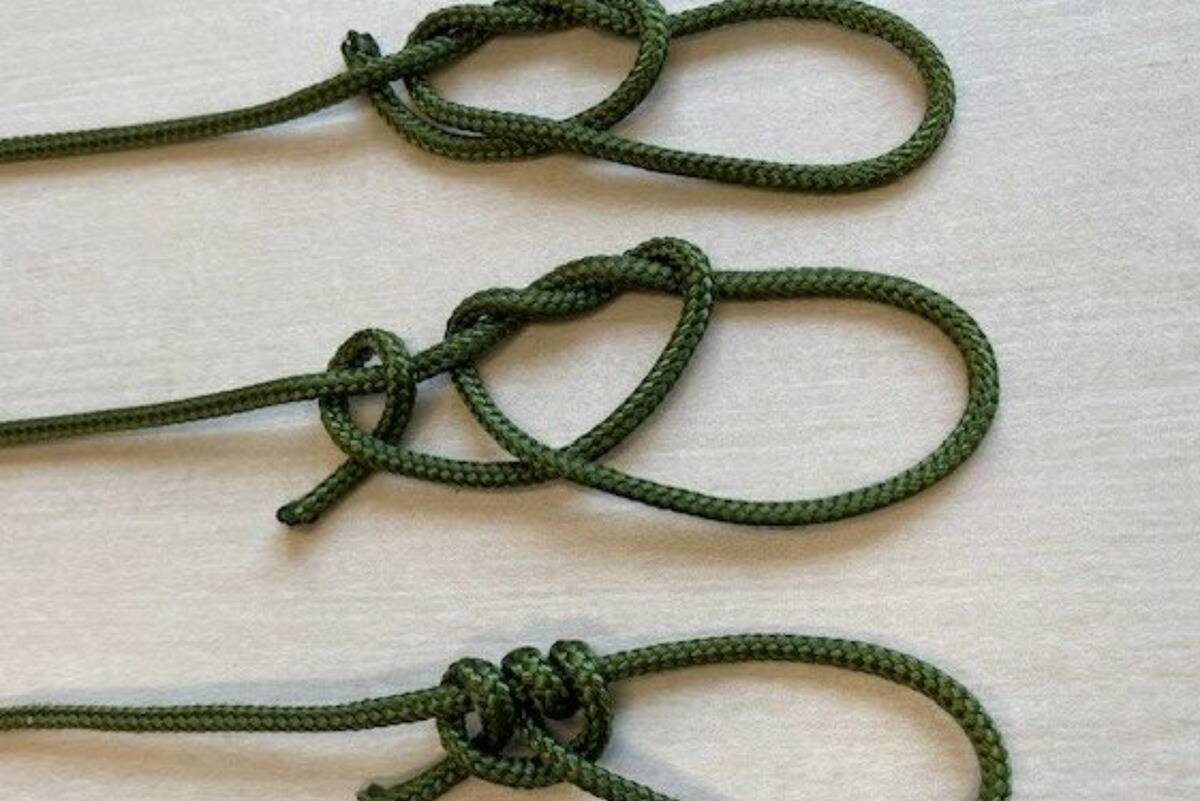
If you need to create a line that stays taut but can be adjusted, like on a tent or tarp guy line, the taut-line hitch is your best bet. It grips the rope when under tension but can slide up or down when you need to change the length.
How to tie it:
To tie a Taut-Line Hitch, start by wrapping the rope around an anchor like a tent stake. Take the working end and make two loops around the standing line, moving toward the anchor. Then, make another loop on the opposite side, farther from the anchor. Pull the knot tight. The key is keeping the wraps snug and the knot neat to ensure it grips properly when weight or pressure is applied.
5. Figure Eight Knot: Stop Things from Slipping Away
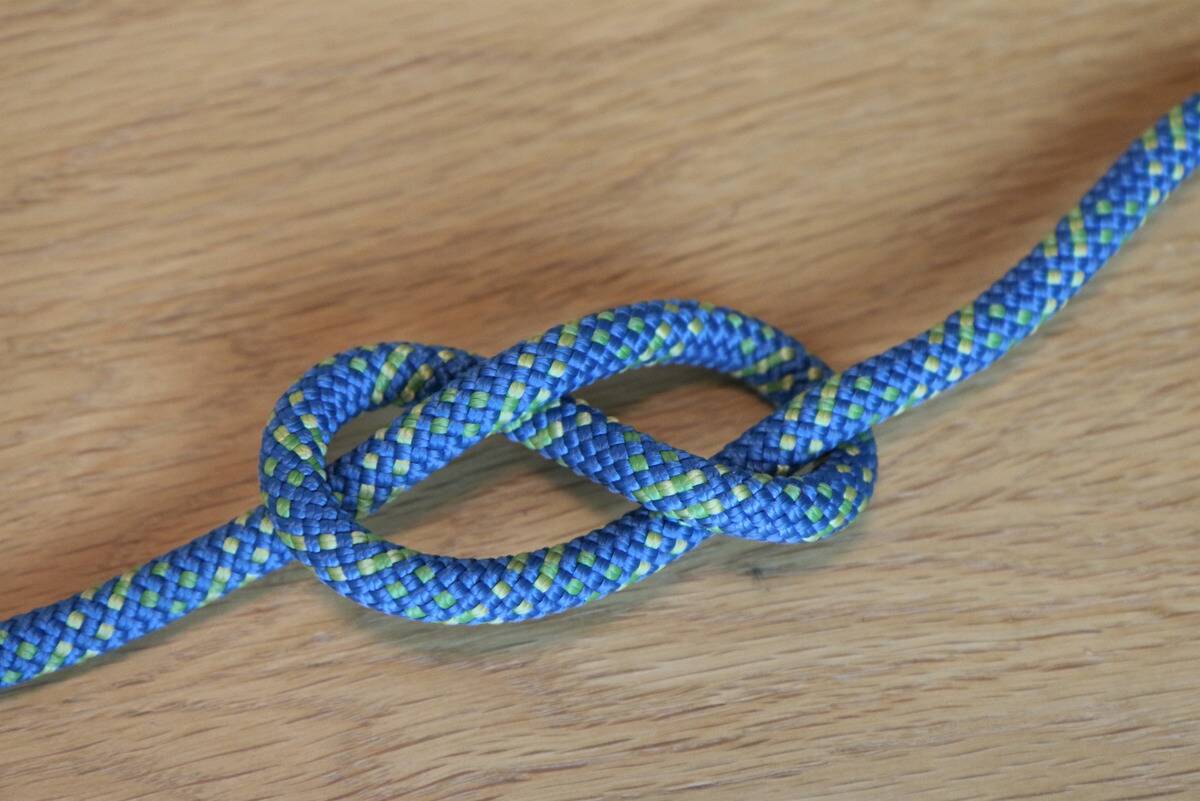
The figure eight knot is mainly used to keep the end of a rope from slipping through a hole or pulley. It's the knot climbers trust for good reason: it’s strong, clean, and easy to check at a glance.
How to tie it:
To tie a figure eight knot, start by making a loop near the end of a rope. Take the working end and pass it under the standing part, then bring it over and down through the original loop. Pull both ends to tighten. The knot will look like the number eight when finished.
6. Prusik Knot: For Climbing or Hauling
This one's for more serious scenarios, but if you're ever in a situation where you need to climb a rope, ascend or descend safely, or set up a hauling system, the Prusik knot is your best friend. It creates a friction hitch that grabs the main rope when weighted but can slide when unweighted.
How to tie it:
To tie a Prusik Knot, start by wrapping a loop of cord (called a Prusik loop) around a larger rope. Pass the loop through itself, forming a hitch around the main rope. Wrap it around the rope two more times, keeping the wraps neat and aligned. Pull the knot tight so the loops grip the rope snugly. When finished, the knot should slide when not weighted but hold firm under tension.
Bonus: It’s made with a smaller loop of rope tied around a larger rope, so it’s something you can prep ahead of time and keep in your kit just in case.
7. Two Half Hitches: Classic and Reliable
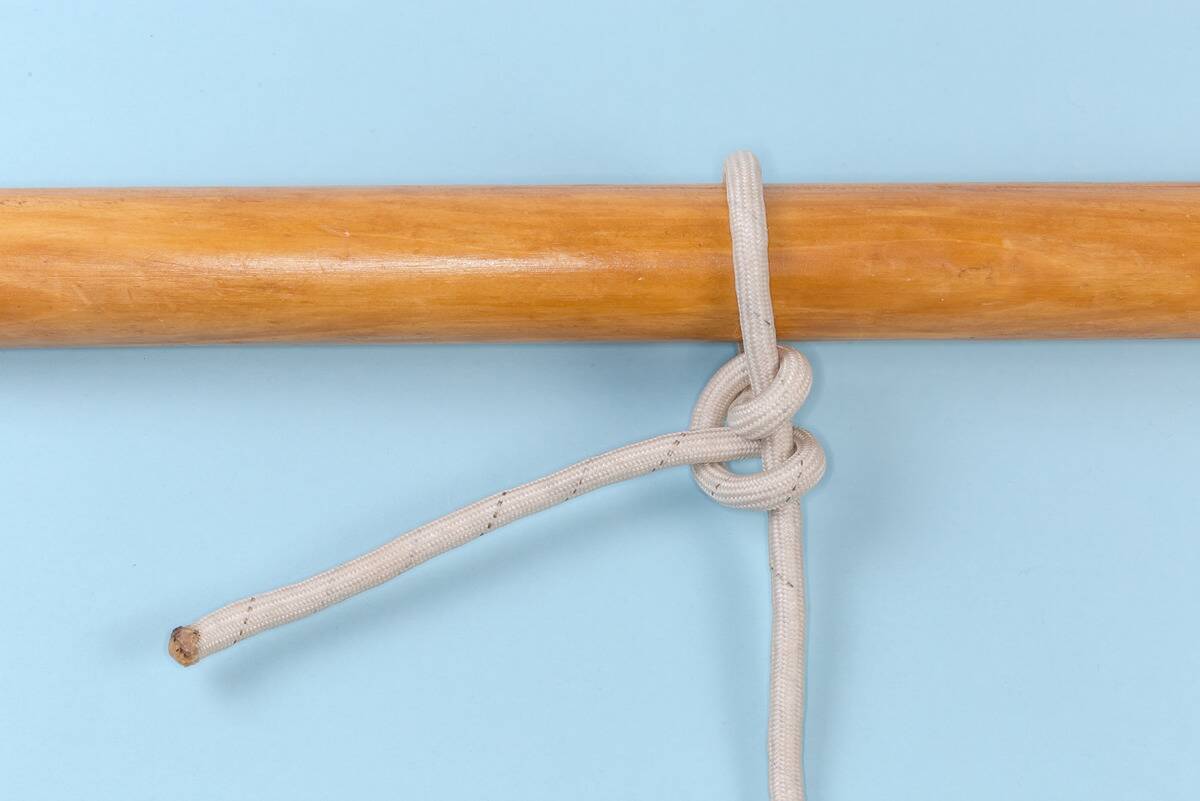
This is one of the most dependable knots for tying a rope to a fixed object. It's simple, versatile, and doesn’t slip easily. Whether you’re tying a tarp to a tree, hanging gear, or anchoring something in place, this one can do it all.
How to tie it:
Wrap the rope around a post, then loop the end around the standing part twice. Tighten and you’re good to go.
You don't need to become a knot-tying expert overnight. Just learning a few of these basic knots and practicing them every once in a while can give you the confidence and skill to use them if you ever need to. The next time you’re in the great outdoors (or even just packing a car), you’ll be glad to have these knots in your arsenal.






